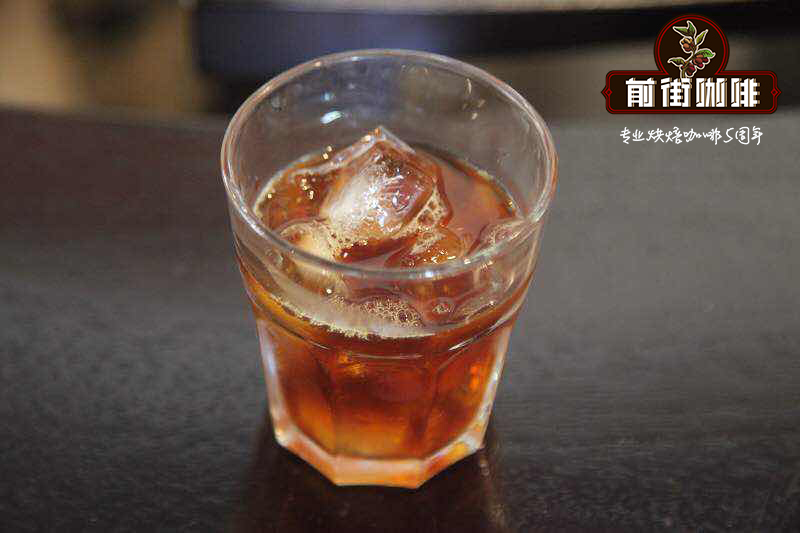The principle of hand-brewed coffee introduces how to make hand-brewed coffee and share the parameters of grinding ratio and manipulation.

Professional coffee knowledge exchange more coffee bean information please follow the coffee workshop (Wechat official account cafe_style)
The principle of making coffee by hand? How do you cook it? What are the steps and methods?
The so-called brewing coffee is actually the process of extracting molecules from coffee cells.
This process includes the following three steps: infiltration, stewing, dissolution and release.
These three steps occur one after another and interact with each other, resulting in the special flavor of coffee.
We will explain the following one by one:
Step 1: infiltrate
Pour a small amount of hot water into the filter paper and let the hot water blend with the coffee powder for about 10-20 seconds.
The limit of water quantity is that there is no leakage from the bottom of the filter cup.
Step 2: stew
Roasted coffee beans are full of carbon dioxide. The fresher the coffee beans, the more carbon dioxide they contain.
According to the grinding thickness of coffee beans, when hot water touches coffee powder, carbon dioxide is released first, forming a layer of air bubbles on the surface.
When you flush by hand, you will see the coffee powder in the filter cup slowly begin to expand (as shown in the following picture)
So when we see bubbles gushing out, we suspend water injection and wait for carbon dioxide to be completely released.
The coffee powder stops expanding and then continues to heat water in order to achieve a better extraction effect.
Step 3: dissolve
Except that 2/3 of the ingredients of coffee beans are insoluble cellulose, the other 1/3 are soluble odor molecules.
It is also a decisive flavor factor, which can be roughly divided into three categories:
The first small molecular substances dissolved include acidity and aroma.
And then it's middle molecular sweetness.
Finally, it's the bitter taste of macromolecules.
These are the different levels of taste of coffee. So, if you like sweeter flavors, the extraction time will be shorter.
Because the longer the hot water stays on the coffee powder, the more bitter molecules will be dissolved.
Step 4: diffusion
After the odor molecules dissolve, they leave the coffee powder by infiltration, a process called diffusion.
The odor molecule diffuses into the hot water to form the final coffee extract.
Once you understand the principle, you should be able to understand the effect of different hand conditions on the flavor of coffee.
All the different causes actually revolve around one core: extraction time.
That is, the time when coffee powder reacts with hot water. We have sorted out some important factors below:
Uniformity of coffee powder particles:
The extraction speed of fine coffee powder is fast, while the extraction speed of coarse coffee powder is slow. the complete extraction time is different.
If the powder particles are not uniform, it is possible that the fine coffee powder has begun to release bitter molecules, and the coarse coffee powder has not been fully extracted.
Causing the final coffee to taste bad. If the coffee powder is uniform, it will not have this problem.
Coffee powder particle size:
The finer the coffee powder, the longer the hot water will flow through the coffee powder.
Filter paper thickness:
The thicker the filter paper is, the slower the flow rate of the extract is, and the longer the interaction time between hot water and coffee powder is.
Speed and method of water injection: water injection is uniform and stable, so that the extraction speed of coffee powder is the same.
In addition, the height of water injection will also affect the water temperature. It is recommended to get as close to the filter cup as possible and inject water by repeated loops.
Important Notice :
前街咖啡 FrontStreet Coffee has moved to new addredd:
FrontStreet Coffee Address: 315,Donghua East Road,GuangZhou
Tel:020 38364473
- Prev

How to choose utensils when playing hand flushing? How many types and brands are there? What should be paid attention to in the selection?
Professional coffee knowledge exchange more coffee bean information please follow the coffee workshop (Wechat official account cafe_style) how to choose utensils? How many types and brands are there? What should be paid attention to in the selection? The selection of utensils is the beginning of affecting the flavor of coffee! Good utensils are the starting point of good flavor. There are hundreds of coffee utensils, including Bialetti, Bodum, Chemex and Cafflan.
- Next

What does the filter cup have to do with the filter paper? Why wet filter paper?
Professional coffee knowledge exchange more coffee bean information please follow the coffee workshop (Wechat official account cafe_style) what is the relationship between the filter cup and filter paper? Why wet filter paper? The reason for wetting filter paper with hot water is mostly due to the residual problem of bleaching fluorescent agent in white filter paper, if there is no such concern for unbleached pulp. On the premise, in terms of air permeability, in terms of stuffy steaming
Related
- Detailed explanation of Jadeite planting Land in Panamanian Jadeite Manor introduction to the grading system of Jadeite competitive bidding, Red bid, Green bid and Rose Summer
- Story of Coffee planting in Brenka region of Costa Rica Stonehenge Manor anaerobic heavy honey treatment of flavor mouth
- What's on the barrel of Blue Mountain Coffee beans?
- Can American coffee also pull flowers? How to use hot American style to pull out a good-looking pattern?
- Can you make a cold extract with coffee beans? What is the right proportion for cold-extracted coffee formula?
- Indonesian PWN Gold Mandrine Coffee Origin Features Flavor How to Chong? Mandolin coffee is American.
- A brief introduction to the flavor characteristics of Brazilian yellow bourbon coffee beans
- What is the effect of different water quality on the flavor of cold-extracted coffee? What kind of water is best for brewing coffee?
- Why do you think of Rose Summer whenever you mention Panamanian coffee?
- Introduction to the characteristics of authentic blue mountain coffee bean producing areas? What is the CIB Coffee Authority in Jamaica?

